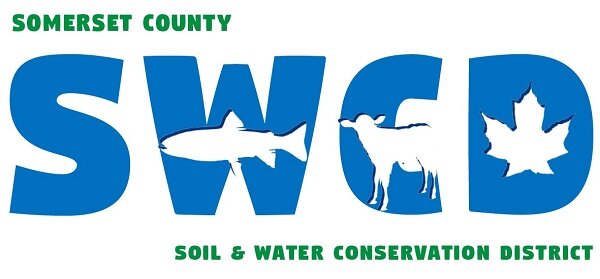Pruning Apple Trees
By Joe Dembeck, Somerset County SWCD Executive Director
Yep, it is that time of year again – Pruning Time!
Some Pruning Tips and Considerations
An excellent resource regarding pruning and restoring neglected apple trees is the University of Maine Cooperative Extension’s publication entitled, “Wild Apple Trees for Wildlife”
Available here: https://extension.umaine.edu/publications/7126e/
Time your pruning during the trees’ dormant period, January through bud break (~early April).
When pruning trees that have not been pruned in a while (10+ years) - or never, think of it as a multi-year task. Years 1-3 are focused on removing dead wood, creating shape amongst branches, and providing a balanced shape to the tree. Years 4+ will be focused on maintaining shape and production.
When clearing around (“releasing”) apple trees that have other trees grown into them, provide at least 2 feet of space from an apple tree’s outer branches to the branches of neighboring trees.
The primary focus of pruning is creating space for airflow, sunlight and room for fruit.
Take time with hard decisions. You are dealing with trees that can live 100+ years!
25-30% removal of live branches in any one year - MAX!
Take a Workshop! (Even if you have taken one before. Each is different, from instructors to participants to locations!) See below for a list of upcoming local workshops.
Bud Types
Here is a chance to further your knowledge of apple trees by combining a little internet searching and looking at your apple trees during the growing season. Fruit-producing apple trees contain two types of buds: fruit (flower) buds and leaf (shoot, growth) buds. Both bud types are formed on an apple tree by the end of summer and will be the focus of all leaf and flower growth the following spring. So, getting an understanding of what each of these bud types look like and where they are found can provide you with more information in planning your winter pruning.
The following picture of a Wolf River tree shows the difference between the two bud types for this variety. The leaf buds are smaller and pointed, while the fruit buds are thick and shaped like small barrels.
If all apple tree varieties had such a stark difference between bud types as Wolf River, it would be easy to identify. Unfortunately, that is not the case. Some varieties have similar differences between bud types while others are much more subtle and need an experienced eye to differentiate. Have fun with the learning!
Tips for how to identify bud types on your apple trees:
If you know your variety of apple tree(s), spend a little time searching online to see if you can find pictures.
During this Spring’s bloom look at the buds that flowers and leaves originate from on a tree. Can you identify differences? Take pictures to help you recall later.
In August and September look at the locations of leaves and fruit on your trees to see where they occur.
Upcoming Pruning Workshops
Saturday, March 5 – MOFGA, “Bringing Back an Old Orchard” in Gouldsboro
https://www.mofga.org/event-calendar/bringing-back-an-old-orchard-gouldsboro/
Sunday, March 6 – Somerset County SWCD in Skowhegan
https://www.somersetswcd.org/events/appletreepruning1
Saturday, March 12 – Somerset County SWCD in Skowhegan
https://www.somersetswcd.org/events/appletreepruning2
Saturday, March 12 – MOFGA (various locations statewide)
https://www.mofga.org/event-calendar/pruning-fruit-trees-2/
Saturday, March 19 – Oxford County SWCD in Waterford
https://oxfordcountyswcd.org/workshops/
Saturday, March 26 – Piscataquis County SWCD in Dover-Foxcroft area
https://piscataquisswcd.org/PCSWCD/event/pruning-fruit-trees-workshop/

